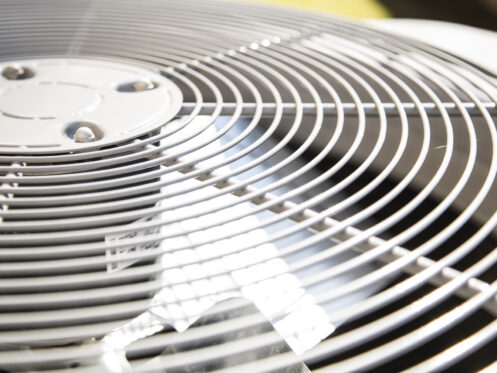A growing number of homeowners are concerned about the impact their HVAC system is having on their energy bills. More than 30% of US households use electricity for winter heating compared with more than 45% that use natural gas. Fossil fuel prices continue to rise. In some areas, this makes electric heating the more affordable option for households.
Not all electric heating technology is created equal. Some electric furnaces can be up to 100% efficient. This sounds good when you compare it to a gas furnace that, at its best, reaches 95% efficiency. However, both of these numbers pale when compared to the efficiency of a heat pump. Moderate heat pumps have a cooling or heating output that can be up to four times the input of electricity. That’s a level of efficiency that was unimaginable in the days when gas furnaces were the only option.
Similarities and Differences Between Heat Pumps and Electric Furnaces
Heat pumps and electric furnaces share some things in common. Both technologies need electricity to operate. Neither produces airborne pollutants when they operate. An electric furnace and a heat pump can use the ductwork that already exists in your home. Duct-free heat pumps can deliver heat directly to a room via its indoor units.
Do these similarities mean that an electric furnace and a heat pump are the same thing but with different names? No. The technologies used in a heat pump and electric furnace are completely different.
How an Electric Furnace Works
Like a hair dryer or toaster oven, an electric furnace has multiple heating elements. These coils are designed to produce heat or electricity that travels through them.
Air gets pulled into the furnace via a heat exchanger. Electricity travels through the heating elements, warming in the air. Then, a blower motor pushes the warm air into the home’s ductwork. Electric furnaces have an efficiency rate of up to 100%. All electric furnaces are cheaper to install than a ducted heat pump or combustion furnace. However, in colder climates, an electric furnace can be very expensive to operate.
How an Air Source Heat Pump Works
An air source heat pump has an outdoor and indoor unit. If it is a ductless unit, there can be several indoor units that distribute treated air into the different rooms of the home.
A heat pump runs on electricity. However, it does not create heat using electricity. Instead, a heat pump uses your home’s electrical supply to transfer the heat from the ambient air in your home outside or vice versa, depending on whether the unit is being used to heat or cool your home.
With a heat pump, ambient air travels across the indoor unit’s coils. The heat from the air heats the refrigerant in the coil, turning it from a liquid into a gas. Pressure is applied to the gas, creating a hotter gas. The refrigerant condenses into a liquid, releasing the heat. The stored heat is transferred through the ductwork or delivered directly to the room through the indoor unit. The refrigerant moves to the outdoor unit, turns cold, and the cycle begins again.
During the cooling season, the same process happens only in reverse. With a heat pump, you just need one appliance to keep your home warm during the winter and cool during the summer.
Heat pumps are less expensive to operate over time. Electric furnaces can pass electricity through the heating element as it operates. In the winter, that is a constant flow of electricity.
Heat pumps move heat from one place to another. Therefore, they require less power than electric furnaces. This means that they can heat and cool with an efficiency that other HVAC appliances cannot match.
Heat pumps can provide long-term savings for residential and commercial properties. Heat pumps and mini-split units provide heating that is more even than forced air units. They provide precise temperature control, leading to increased comfort and reduced consumption.
Additional Advantages of Heat Pumps
For those who are interested in the impact their activities have on the environment, heat pump technology has a very low carbon footprint. In many areas, heat pumps qualify for incentives and energy rebates. In some areas, this can reduce the cost of installation by several thousands of dollars.
Ductless heat pumps can purify the air. In cooling mode, they work well as a dehumidifier. In heating mode, they do not pull needed moisture from the air. Additionally, many modern heat pump systems can be equipped with state-of-the-art air filters to remove pollutants from the air.
Advantages of an Electric Furnace
Electric furnaces offer advanced safety. Since they do not rely on oil or gas as their heating source, they do not create hazardous byproducts such as carbon monoxide. When compared to gas furnaces, an electric heater is more efficient. It can increase your energy savings month to month. Electric furnaces are less expensive to install and less expensive to maintain when compared to gas furnaces that have more complex mechanical parts. Like a heat pump, an electric furnace may qualify for some tax rebates and credits. Additionally, an electric furnace is easy to install, especially in areas without ready access to natural gas.
Of course, all of these above-mentioned benefits are also true with heat pumps. However, one area where you will see a major difference is the ability of an electric furnace to heat a space regardless of the outdoor temperature.
A heat pump needs to be able to pull heat from the ambient temperature outdoors in order to heat your house indoors. There are a lot of heat pumps that have been designed to work even when the outdoor temperatures drop below zero. However, the colder it is outside, the less efficient a heat pump becomes. Depending on the model, you might even need to use additional heating so that the heat pump works properly.
This is not an issue with an electric furnace. Since an electric furnace generates heat from electricity, it is able to work regardless of what the outdoor temperatures are.
A heat pump will take longer to heat your home. An electric furnace will be able to start heating your home almost instantaneously. However, with an electric furnace, you might notice cold spots in your home because of how quickly it produces and distributes the heat and how that affects the cycling of the furnace. With a heat pump, the heat is distributed in a steady way, gradually reaching the desired temperature. This allows the heat to disperse evenly throughout the home.
HVAC and Plumbing in Gilbert, Arizona
A/C & Plumbing Doctors is your top choice for HVAC and plumbing in Gilbert, Arizona. Our skilled technicians are concise, thorough, and knowledgeable in all things HVAC and plumbing related. Our 24-hour-a-day, seven days week, emergency service can help you care for all of your home’s emergency HVAC needs. We are proud to stand by our award-winning service and our client satisfaction. We proudly employ NATE-certified technicians and have an A+ rating with the Better Business Bureau.
Our services include HVAC repair, replacement, maintenance, and service. We install heat pumps and electric furnaces. Our plumbing services include general plumbing repair, drain cleaning, garbage disposal installation and repair, leak detection, and pipe replacement. Contact A/C & Plumbing Doctors today for friendly, informative, and helpful HVAC and plumbing services in your area.





